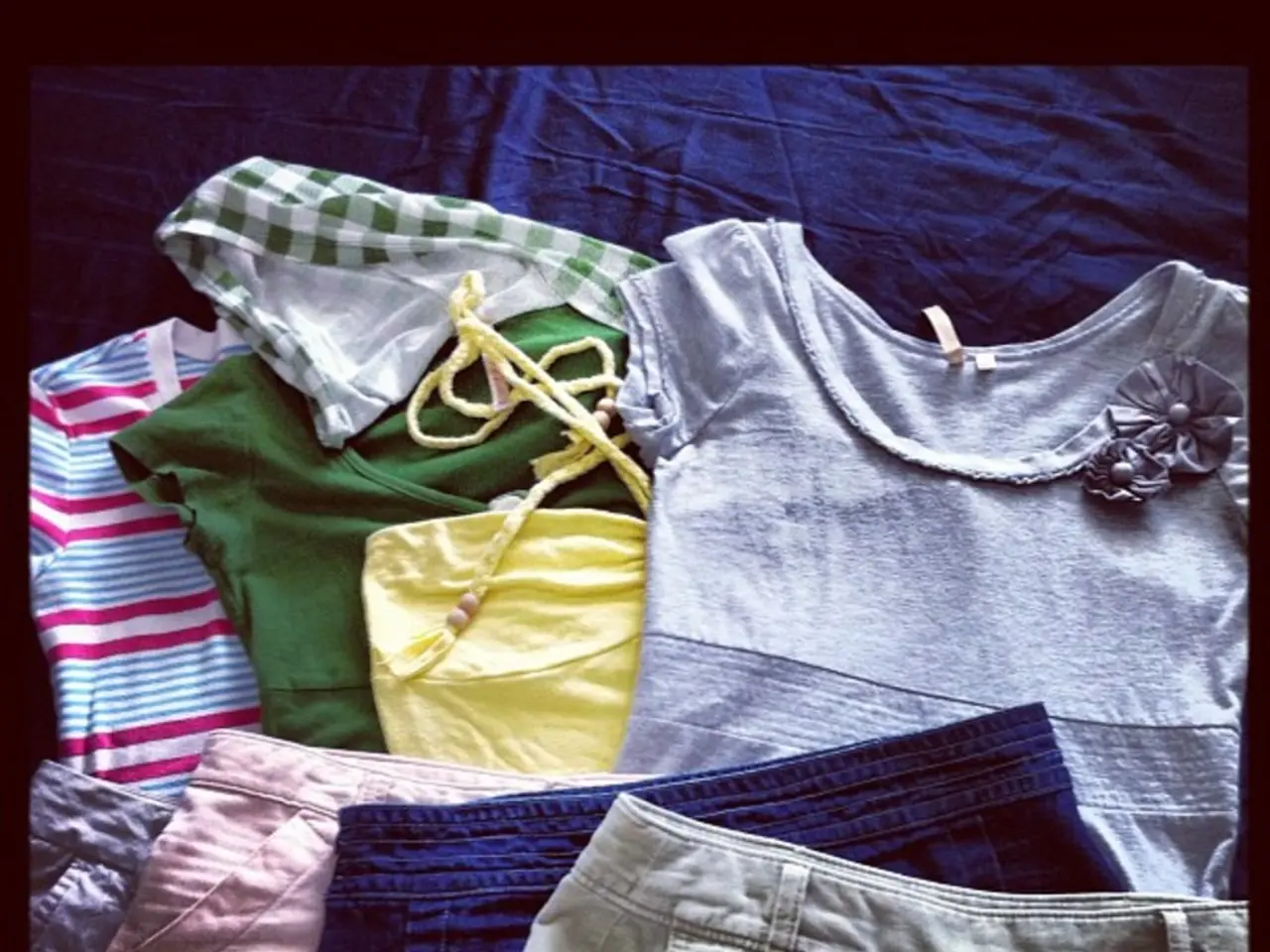Color Principles for Style Trends of 2025 Fashion Design
In the world of fashion, color plays a significant role in creating visually stunning and psychologically resonant outfits. This is where color theory comes into play, providing designers with a structured framework to select and combine colors that are both visually harmonious and appealing.
Color Harmony and Contrast
Color theory guides fashion designers in choosing color palettes that achieve harmony (colors that blend well) or contrast (colors that stand out), creating visually pleasing and dynamic outfits. This enhances the overall aesthetic impact of the design.
Psychological Impact
Each color carries psychological meanings—such as yellow evoking happiness or blue suggesting calmness—that designers exploit to convey emotions or messages through fashion.
Personal Styling (Color Analysis)
Based on color theory, methods like seasonal color analysis categorize individuals into "seasons" with specific palettes of warm or cool colors that best flatter their skin tone, hair, and eyes. This scientific approach to color maximizes the wearer's natural appearance and personal expression.
Color Dimensions and Context
Understanding the three dimensions of color—hue, value (lightness/darkness), and chroma (intensity)—along with how surrounding colors influence perception, helps designers craft outfits that highlight features effectively.
Consumer Perception and Aesthetic Comfort
The color of clothing affects consumer choices and how wearers are perceived aesthetically and socially. Designers use color strategically to attract attention and create aesthetic comfort that suits the setting or purpose.
Common Color Schemes
- Triadic Colors: Evenly spaced out on the color wheel, triadic colors are frequently quite vibrant and lively. In a triadic color scheme, you can either choose one dominant color and use the others sparingly, or downplay the other two colors by selecting a softer tint.
- Complementary Colors: Based on the use of two colors that are situated next to each other on the color wheel, complementary color schemes provide high contrast and vibrancy.
- Split-Complementary Colors: This scheme uses one base color and two secondary colors, which are symmetrically arranged around it on the color wheel. The split-complementary color scheme's colors all generate contrast.
- Analogous Colors: A single major color is paired with the two colors that are right adjacent to it on the color wheel. Analogous color schemes create a harmonious and cohesive look.
- Monochromatic Colors: A single color with various hues and shades is used to create a unified look and feel.
Neutral Hues
Neutral hues like beige, grey, cream, white, and black can complement primary and secondary hues, adding depth and balance to outfits.
Color Theory in Action
Designers use a clothing color wheel and data about human optical ability, psychology, culture, and more to choose colors. They employ guidelines such as the 60-30-10 guideline, which is frequently employed in color theory for designers to create a calm, aesthetically pleasing equilibrium.
In the realm of fashion, color theory is an essential tool, integrating art with science to elevate style and communication through color.
- Technology and artificial intelligence could be used by fashion designers to analyze color combinations, predict aesthetic comfort, and determine color preferences of consumers based on their cultural background, personal history, and emotional wants, thus enhancing the overall impact and relevance of their designs.
- As fashion continues to evolve, artificial intelligence driven by advanced color theory could allow designers to generate unique and innovative color palettes, revolutionizing the way they create visually stunning and psychologically resonant outfits, setting new trends and pushing the boundaries of fashion.




